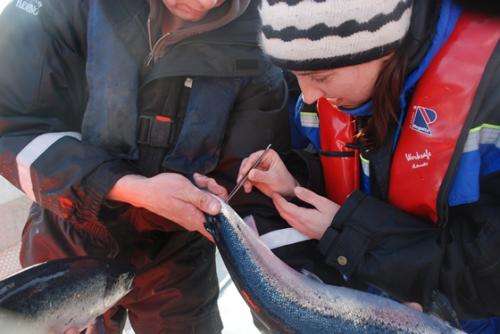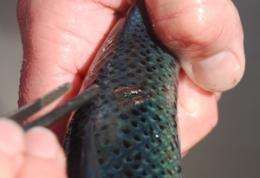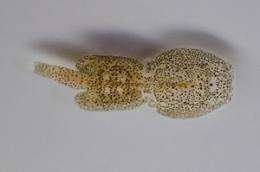Disease control in Norwegian salmon aquaculture with emphasis on Pancreas Disease and salmon louse

Disease is one of the most challenging issues facing the Norwegian fish farming industry today. Infectious diseases caused by bacteria, viruses or parasites impair fish welfare, lead to profit losses and can potentially also have negative consequences for
Good disease control is therefore crucial. Marit Stormoen's PhD project focuses on the control of Pancreas Disease and salmon louse in the Norwegian aquaculture industry.
Pancreas Disease (PD) is a viral disease currently spreading along the Norwegian coast and is caused by Salmonid Alphavirus 3 (SAV3) or Salmonid Alphavirus 2. Stormoen compared the mortality rate in Norwegian fish farms with and without PD respectively during the period from 2003-2007. Mortality in farms with PD declined from 2004 to 2007 but there were still large variations in mortality rates between the different farms. Stormoen's analyses also showed that it was not just the water temperature that affected mortality rates on farms with PD, but also the season. The highest mortality rate was registered during the spring.
Differences in virulence have so far not been determined between different SAV3 viruses and earlier studies have revealed that the virus shows very little genetic variation. During the project, infected fish from nine Norwegian fish farms affected by PD were collected in order to map the whole of the virus's genetic material (full genome sequencing). Stormoen's study tallied with the findings of earlier partial sequencing studies: that the genetic material of the virus shows little variation. For the first time, however, it was discovered that parts of the genetic material of the sequenced viruses contained many deletions. Deletions (i.e. losses of genetic material) were found throughout the genetic material and in all the clones, but certain areas appeared to be more affected than others. Deletions probably result in viruses that cannot survive, but some deletions still persisted after six passages in cell cultures. The deletions may be the reason why it is difficult to isolate SAV3 from diseased fish without using cell cultures.
Salmon louse is a parasite naturally occurring in Norwegian waters, but due to high host density in the aquaculture industry, concentrations of the parasite can be extremely high in the vicinity of fish farms. It is therefore important to find out how to hinder parasitic infections spreading from the farms to wild fish. Two genders are involved in the reproduction cycle of the salmon louse and a male and female must therefore be present on the host fish in order for the parasite to reproduce. When louse density is low, the chance of adult male and female lice meeting is less and this naturally reduces their rate of reproduction and thereby also the infection pressure. Stormoen used a mathematic model to predict how high a proportion of the lice propagated in relation to different densities in the louse population.

The results of the reproduction study were incorporated into a dynamic model with the aim of predicting the optimum louse density for treatment and how far this would affect the areas around the fish farms with regard to the total production of louse eggs. Stormoen found the louse density on a farm is primarily driven by autoinfection but is triggered in the first instance by infection from nearby farms and possibly by infection from wild fish. This indicates that fish farms should keep louse density low at all times in order to reduce as much as possible the infection of neighbouring wild fish.

DVM Marit Stormoen defended her doctoral research on 9th September 2013 at the Norwegian School of Veterinary Science (NVH) with a thesis entitled: "Disease control in Norwegian marine salmon aquaculture. Contrasting pathogens, diseases and control".
Provided by Norwegian School of Veterinary Science
















